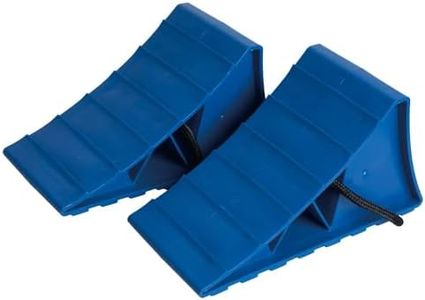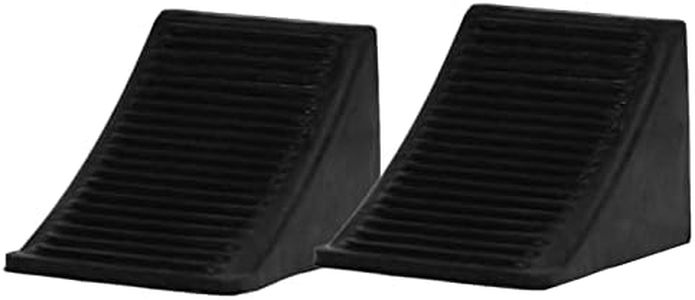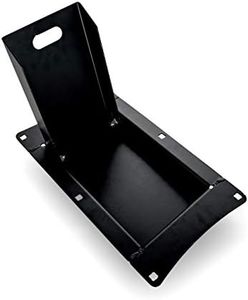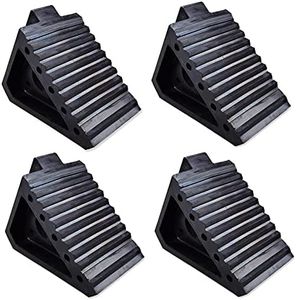We Use CookiesWe use cookies to enhance the security, performance,
functionality and for analytical and promotional activities. By continuing to browse this site you
are agreeing to our privacy policy
10 Best Wheel Chocks
From leading brands and best sellers available on the web.Buying Guide for the Best Wheel Chocks
Wheel chocks are essential tools used to prevent vehicles from rolling when parked, being serviced, or during loading and unloading. Choosing the right wheel chocks is important to ensure safety and stability. You should consider factors like the size and weight of the vehicle, where you plan to use the chocks, and the type of surface they'll be used on. Understanding the key features and specifications will help you select chocks that are reliable and suited to your needs.MaterialMaterial refers to what the wheel chock is made from, such as rubber, plastic, or metal. This is important because the material affects the chock’s grip, durability, and suitability for different environments. Rubber chocks offer good grip and work well on most surfaces, making them common for light to medium vehicles. Plastic chocks are lightweight and suitable for lighter vehicles or trailers on hard, flat ground. Metal chocks are strong and best for heavy-duty or industrial use, especially with larger vehicles. Think about the type of vehicle and the ground surface where you'll use the chock—for example, rubber is great for garage use, whereas metal is best for bigger, commercial vehicles.
Weight CapacityWeight capacity shows the maximum load a wheel chock can support safely. It is crucial to choose chocks rated for more than your vehicle’s gross weight to ensure safety. Chocks with lower capacity work for motorcycles or compact cars, while mid-range capacities are usually enough for SUVs or pickups. Large trucks and buses need heavy-duty chocks. You should check your vehicle’s weight and pick a chock with a higher capacity for strong and stable support.
Size and DimensionsSize and dimensions determine how well the chock fits your vehicle’s wheels. The chock should be large enough to block the wheel effectively without being too bulky. Small chocks suit bikes, lawn equipment, and small trailers. Medium ones work for typical cars and SUVs, while large chocks are designed for trucks, RVs, and buses. To pick the right size, match the chock’s height to about 25% of your vehicle’s tire height. Always check your tire size and make sure the chock makes full contact with the tire for the best hold.
Tread or Surface GripTread or grip refers to how well the chock stays in place against the ground and the tire. A chock with a textured surface, deep grooves, or rubber padding will grip both the wheel and surface better, which is especially important on smoother or sloped surfaces. Minimal-tread chocks are fine for flat, indoor use, while more aggressive treads are better for outdoor, inclined, or slippery surfaces. Consider where you’ll use the chock most often and select a tread design that will keep it firmly in place.
Portability and StoragePortability and storage describe how easy it is to carry and store the chock. Some chocks are lightweight or have handles, making them easy to move and position, which is helpful if you need to use them in multiple locations. Larger and heavier chocks might be more difficult to transport but offer more stability for bigger vehicles. If you'll move the chocks often or store them in your vehicle, consider compact or stackable models that are easier to handle and tuck away when not in use.
Use EnvironmentThe intended use environment covers where you'll be using the wheel chocks, such as indoors, outdoors, on concrete, gravel, or even wet and icy surfaces. Some chocks are designed to resist chemicals, oils, or extreme temperatures, making them better suited for garages, commercial lots, or industrial sites. Think about typical weather conditions and the types of surfaces in your environment. Pick chocks built for these conditions to ensure long-term reliability and performance.
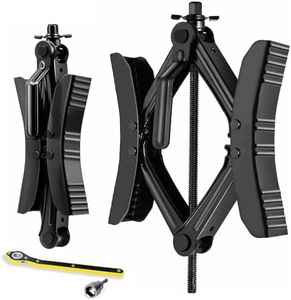

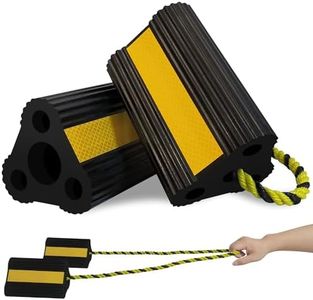
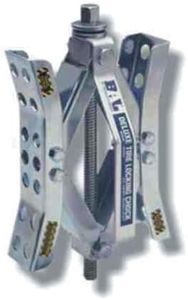
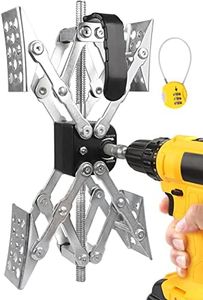
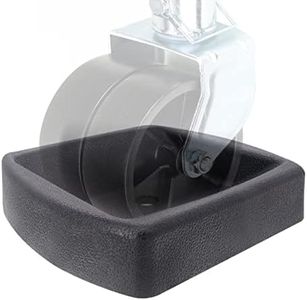
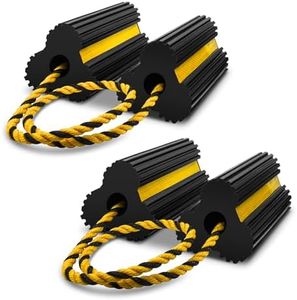
![WECARLLE Wheel Chocks [2pair/4pack with Rope] for RV Trailer Camper Truck Car and Aircraft, Versatile Heavy Duty Rubber Wheel Chocks Block with 3 Reflective Strips, Tire Wheel Immobilizers & Chocks](https://images-proxy.bestreviews.guide/MmmMNaTEgIjAOiIMVVFWxI76iDQ=/0x300/https://m.media-amazon.com/images/I/41q2Y29YvLL._AC_CX679_.jpg)


